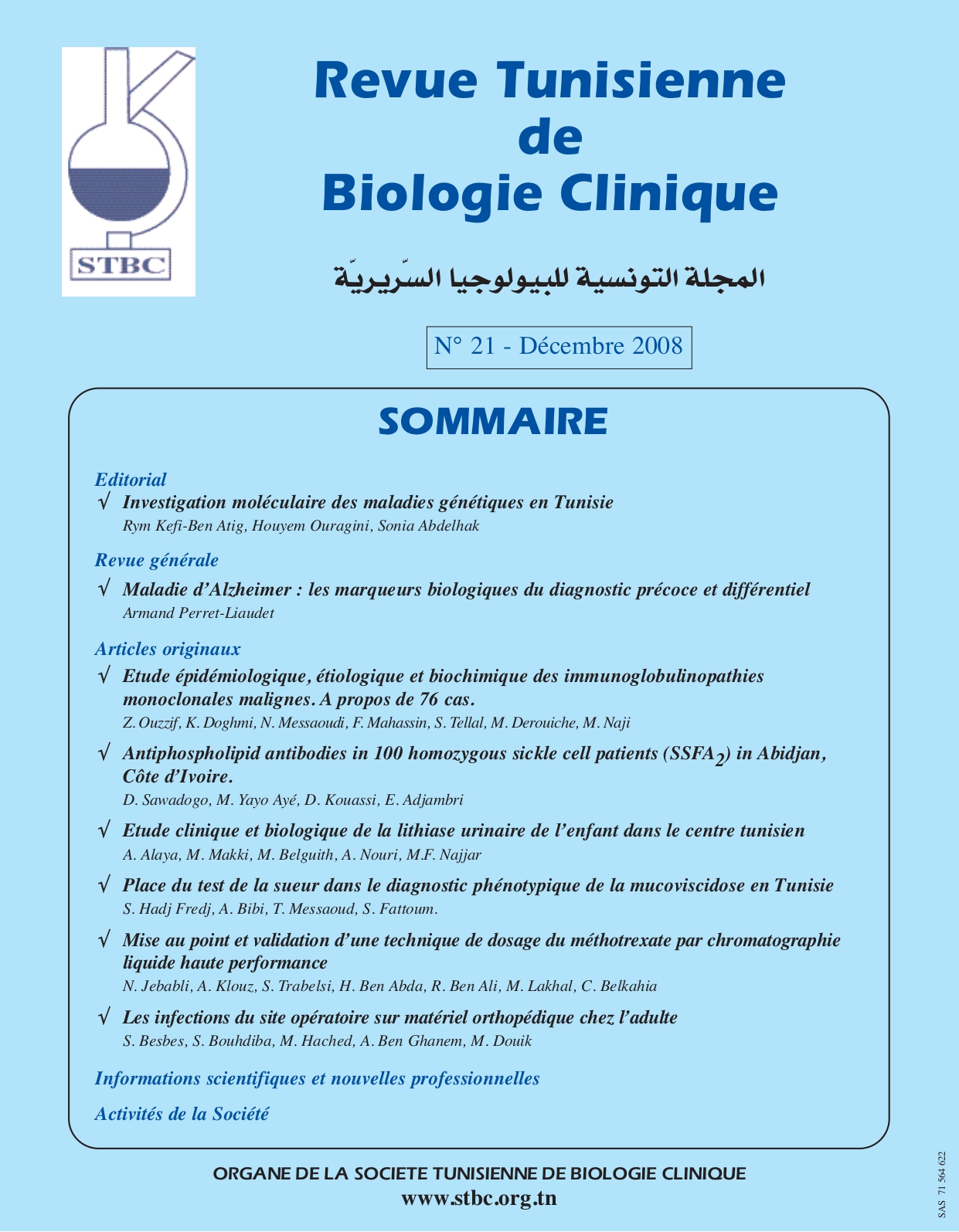Résumé
Objectif : Depuis les années 80, les caractéristiques cliniques et biologiques de la lithiase urinaire de l’enfant n’ont pas cessé d’évoluer dans notre pays. Le but de ce travail est de préciser l’état clinique, biologique et thérapeutique de cette pathologie dans le centre de la Tunisie. Matériel et Méthodes : Notre étude a concerné 104 enfants (âge : 8 mois à 16 ans) hospitalisés pour lithiase urinaire. Un bilan métabolique de première intention, urinaire et plasmatique, a été réalisé chez 96 patients. L’examen morpho-constitutionnel des calculs a été réalisé par un stéréomicroscope et leurs analyses chimiques par spectroscopie infrarouge. Résultats : Une prédominance masculine a été notée avec un sex-ratio de 1,53. La symptomatologie clinique est dominée par les brûlures mictionnelles (28,8%). L’examen cytobactériologique des urines était positif chez 15 patients (14,4%). Les calculs collectés avaient une localisation haute dans 75% des cas. L’identification de la composition cristalline a montré que la whewellite était l’espèce la plus fréquente aussi bien chez les enfants (80,0%) que chez les nourrissons (57,1%). L’urate acide d’ammonium était majoritairement présent chez le nourrisson. Conclusion : la prédominance masculine de cette pathologie est devenue moins fréquente que celle décrite dans les années 80. La symptomatologie clinique est dominée par l’hématurie Nous avons constaté une baisse des lithiases d’infection avec une stabilité des calculs d’oxalate de calcium. La lithiase endémique reste toujours d’actualité en Tunisie, même si elle est moins fréquente. L’âge des patients constitue un facteur important qui doit être pris en compte lors de l’enquête étiopathogénique. La whewellite reste le composant le plus fréquent des lithiases.

Ce travail est disponible sous la licence Creative Commons Attribution 4.0 International .
(c) Tous droits réservés A. ALAYA, M. MEKKI, M. BELGUITH, A. NOURI, M.F. NAJJAR 2024

